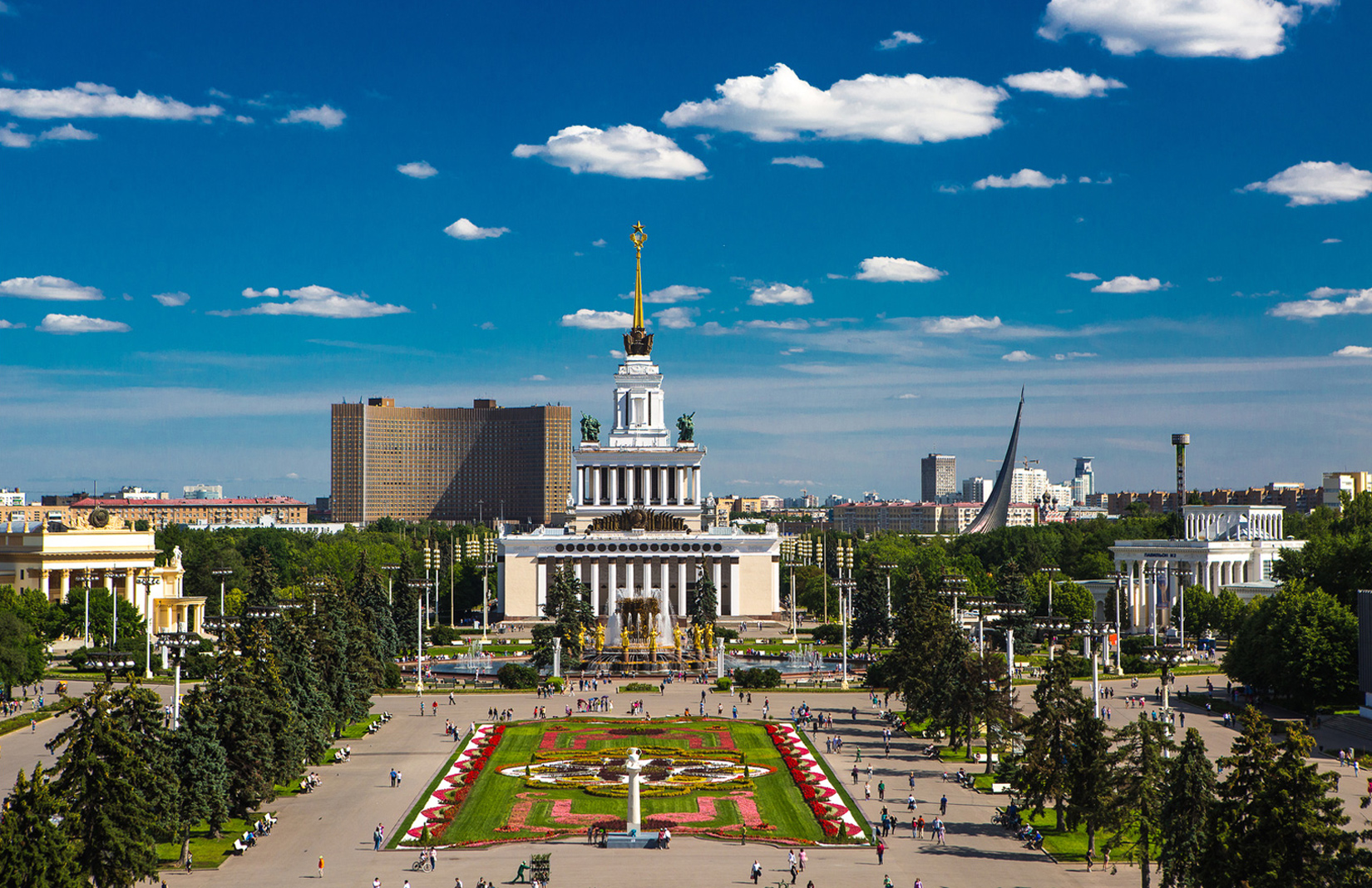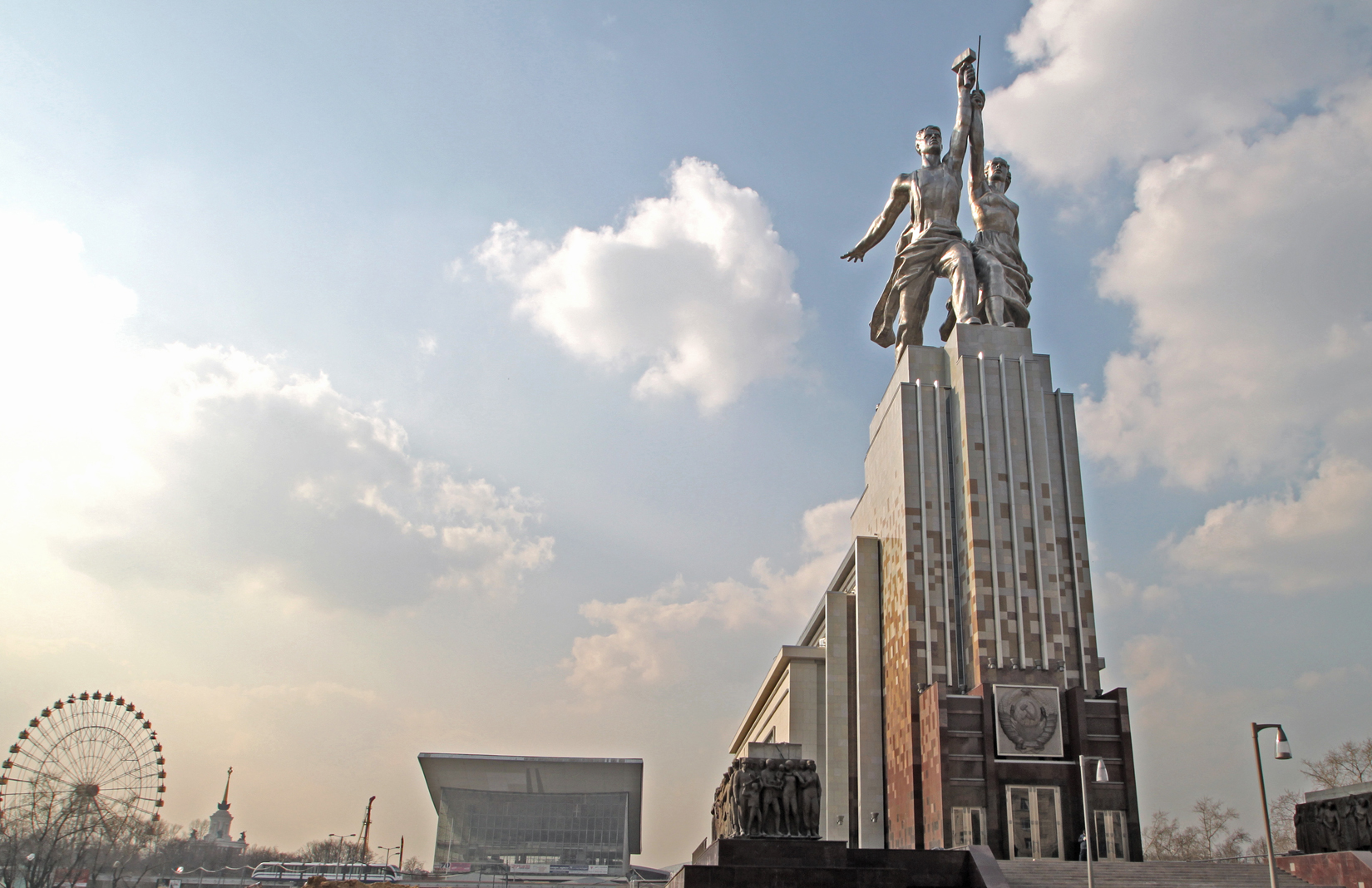
Across the former Soviet Union there are countless examples of monolithic structures rising high from the ground to shelter, collect or govern the citizens living in their shadows.
These strange, sloping forms, concrete parabolic rises and angular designs signify an age of futuristic optimism manifest in the built environment. But what is the relationship between monuments or buildings designed by one regime and passed onto a public for whom that no longer applies? What is their legacy? How are these spaces recontextualised in contemporary society?
The theme of the Venice Architectural Biennale this year was ‘Reporting from the Front’. Curator Alejandro Aravena invited participants to respond and reflect on the role of the architect in the struggle to improve living conditions for all. Titled VDNH Urban Phenomenon, the Russian pavilion showcases the ‘global significance’ of the 2,379,000 sq m VDNKh park in Moscow.
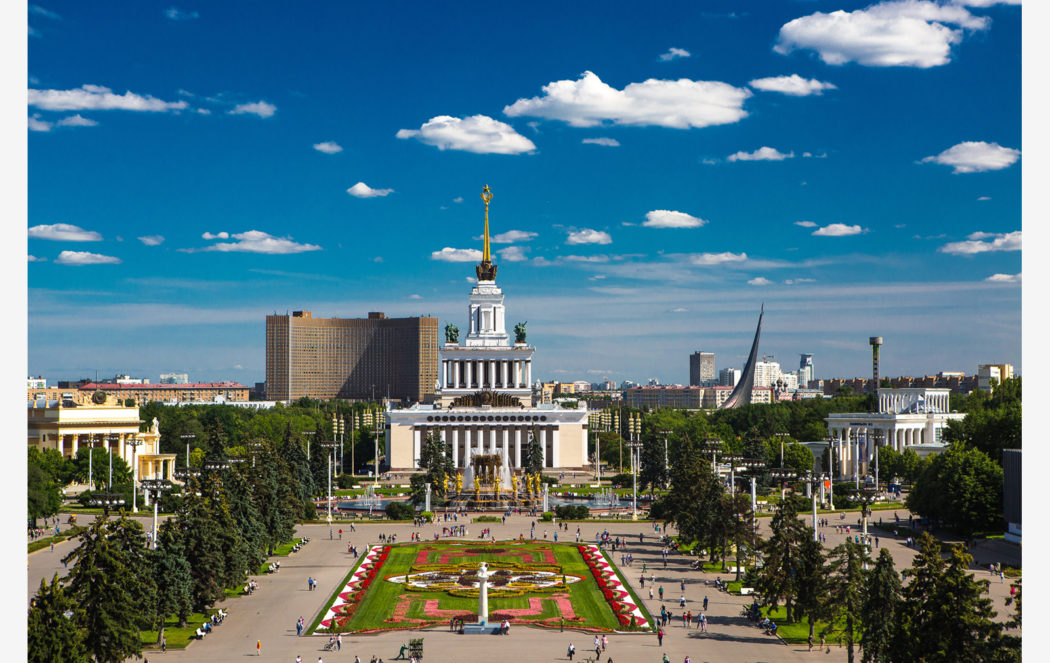
VDNKh Park in Moscow. Photography courtesy VDNKh
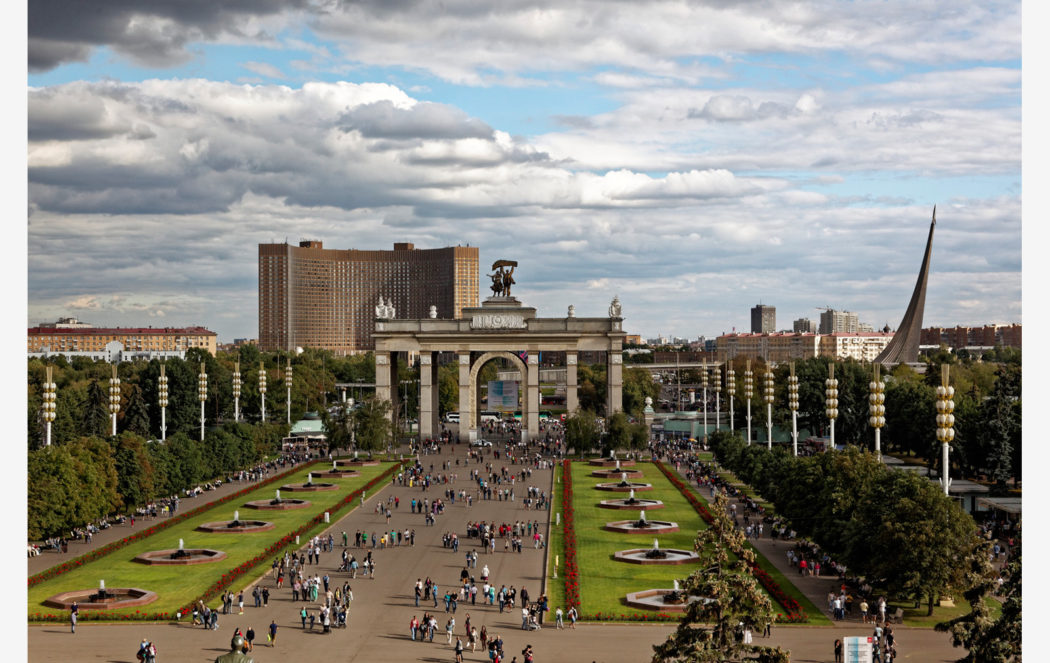
VDNKh Park in Moscow. Photography: Pavel Negedov
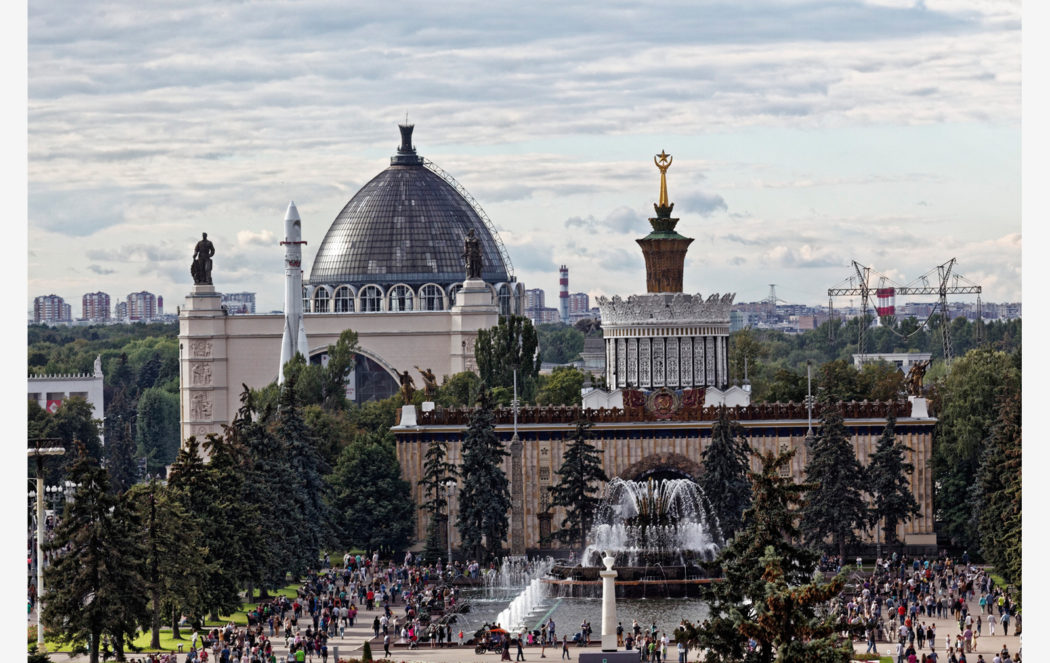
VDNKh Park in Moscow. Photography: Pavel Negedov
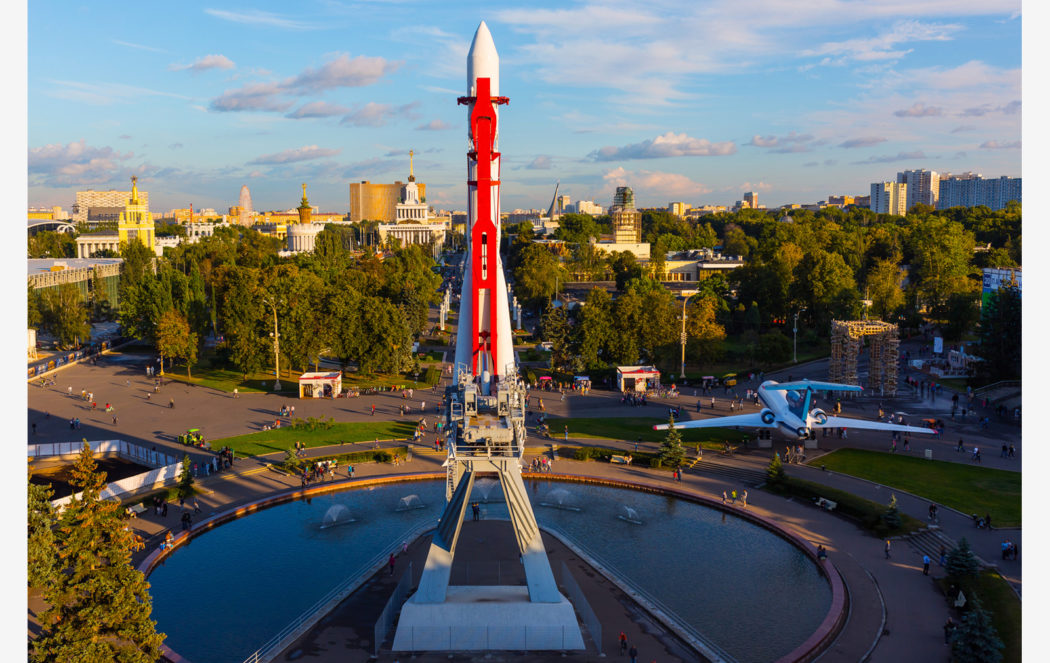
VDNKh Park in Moscow. Photography: Pavel Negedov
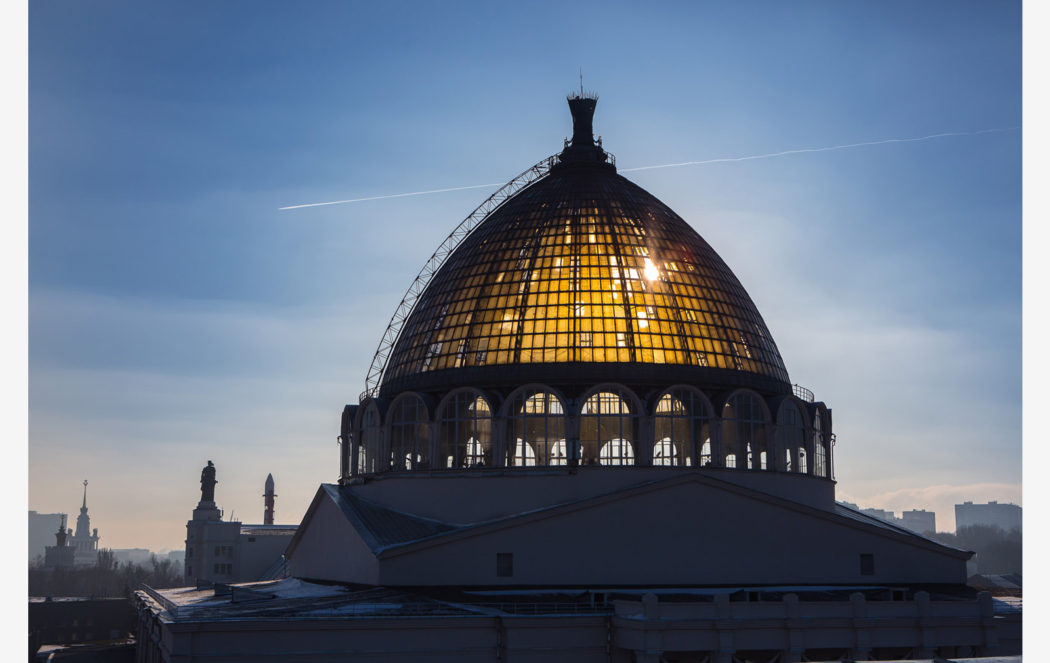
VDNKh Park in Moscow. Photography courtesy VDNKh
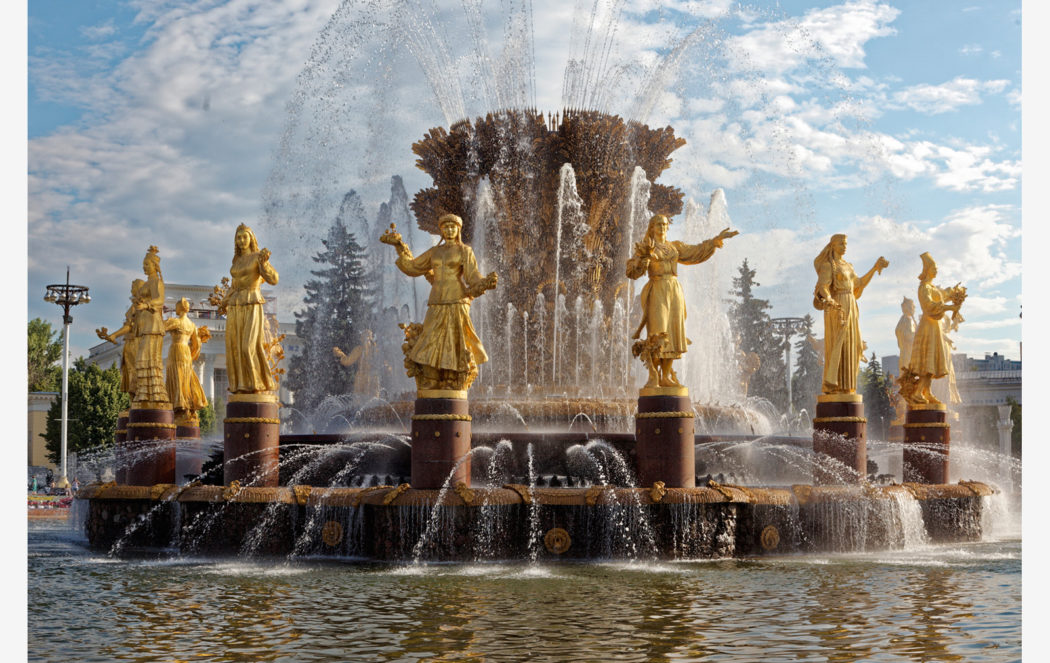
The People’s Friendship Fountain in VDNKh Park in Moscow. Photography: Pavel Negedov
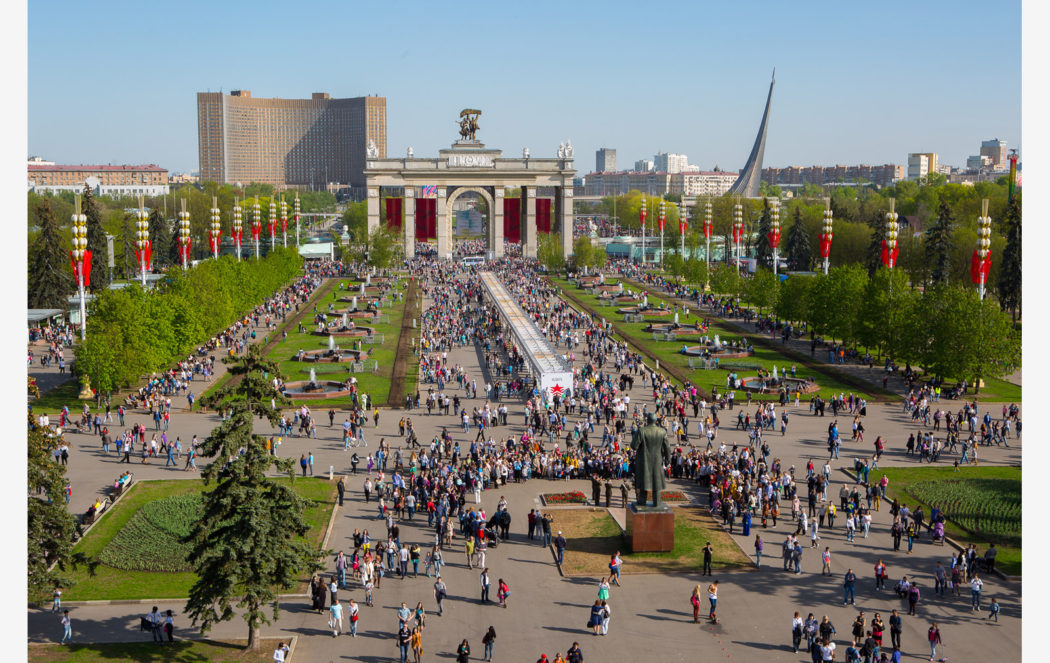
VDNKh Park in Moscow. Photography courtesy of VDNKh
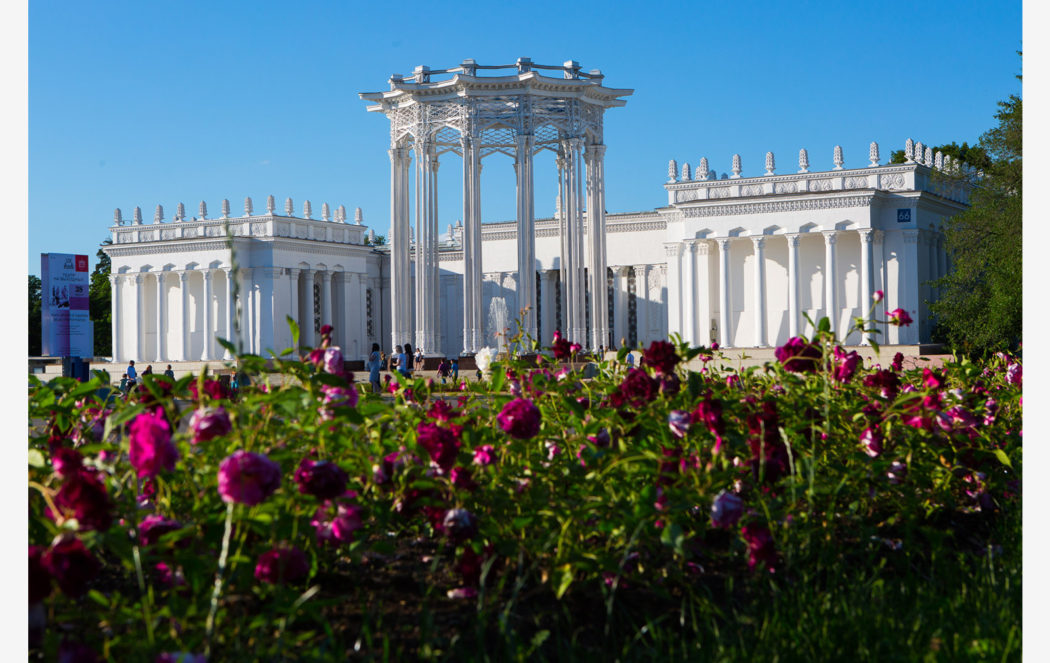
The Uzbekistan Pavilion inside the VDNKh Park in Moscow. Photography courtesy of VDNKh
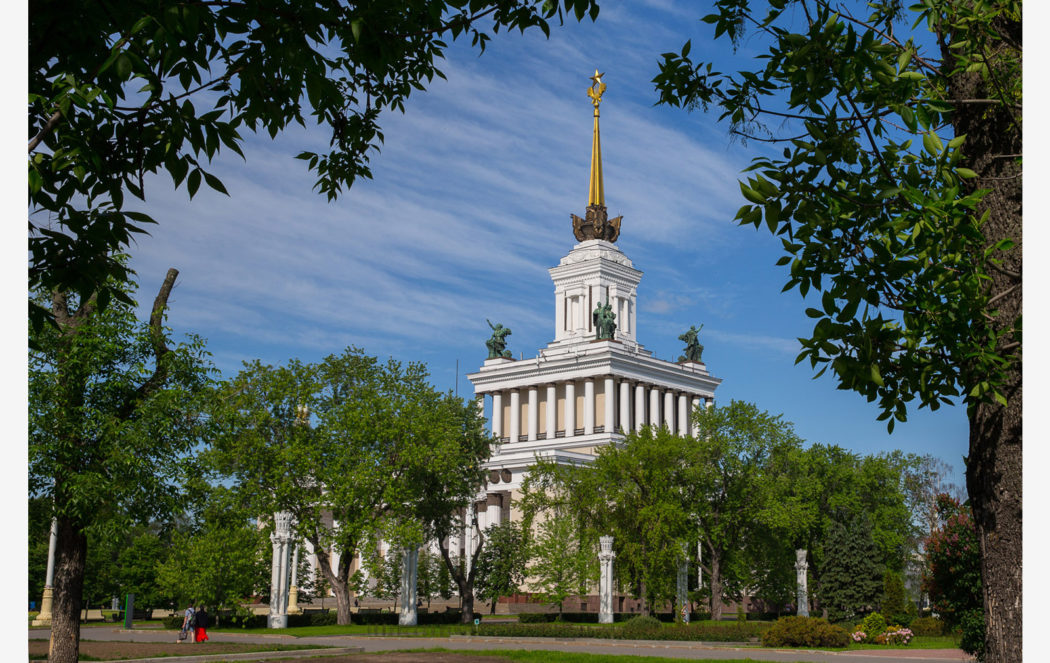
VDNKh Park in Moscow. Photography courtesy of VDNKh
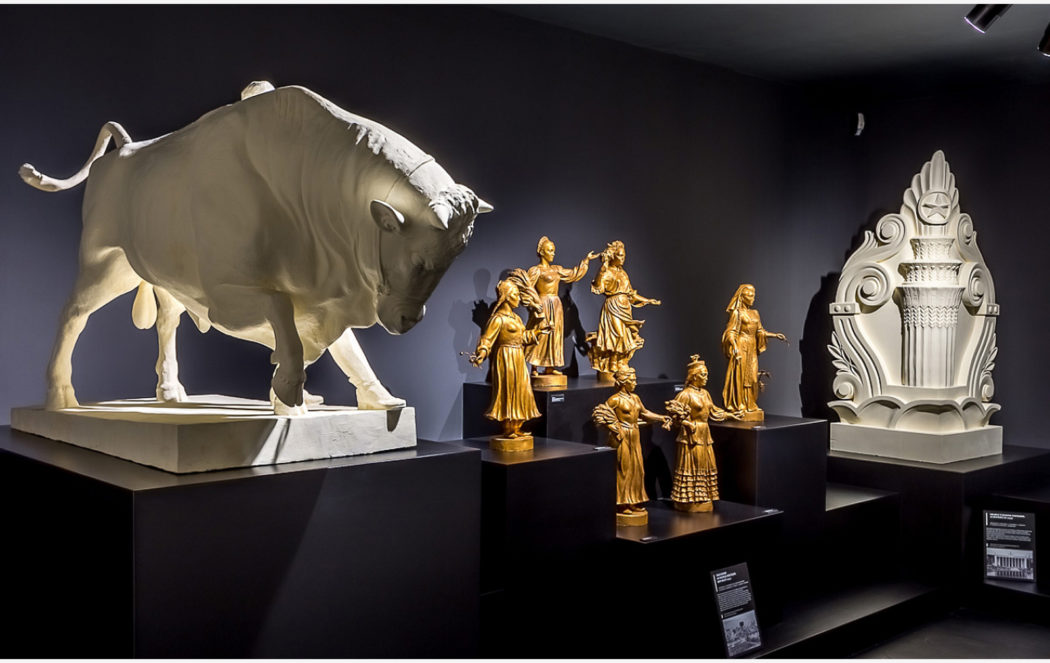
A reproduction of the ‘Man with a Bull’ statue inside the Russian Pavilion at the 16th Venice Architecture Biennale. Photography: Vasily Bulanov
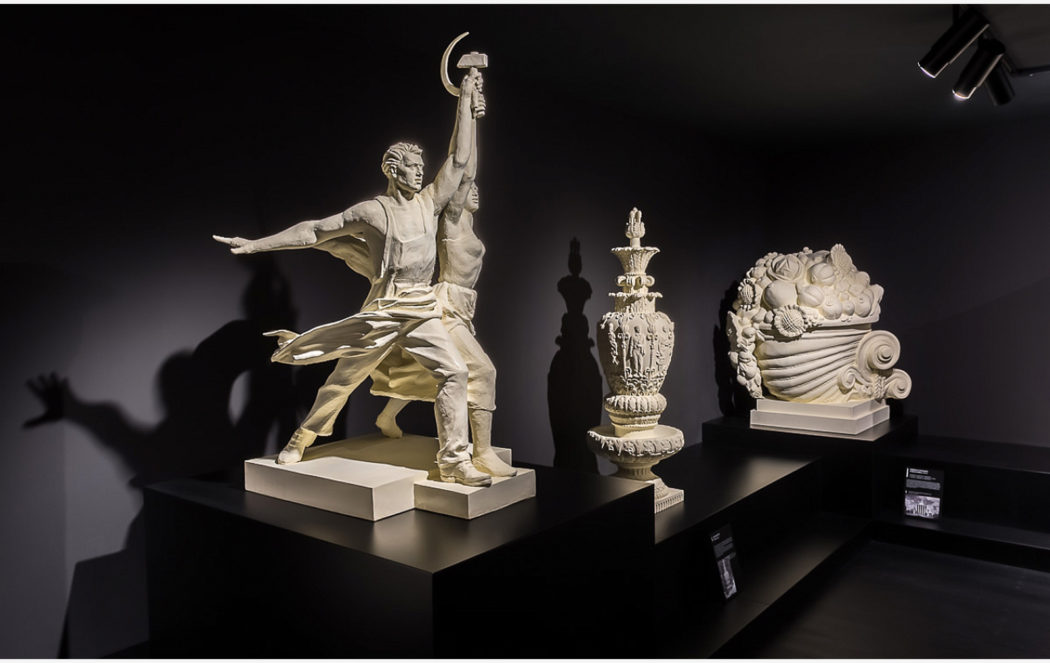
A replica of the ‘Worker and Kolkhoz Woman’ statue inside the Russian Pavilion at the 16th Venice Architecture Biennale. Photography: Vasily Bulanov
Falling into disrepair in the latter days of the Soviet Union, the park is currently the centre of a large city-led regeneration investment programme, renovating the many pavilions that celebrate the scientific and cultural prestige of the former nation.
‘The coherence of this urban ensemble,’ says curator Sergey Kuznetsov, ‘and its necklace of national and thematic pavilions create a territory which is capable of accumulating and multiplying society’s intellectual and cultural energy, and it is this which in the final analysis is helping us win the battle for quality of life.’
Given the recent history of many of these spaces and the complex environment that they came from it’s no wonder they are so fascinating. In Moscow we see grand structures of socialist realism such as the ‘Worker and Kolkhoz Woman’ statue. Originally designed for the World Fair in 1937 in Paris, it towers over the public platform of VDNKh, designed as ‘a multi-format cultural and educational space, accessible to all’.
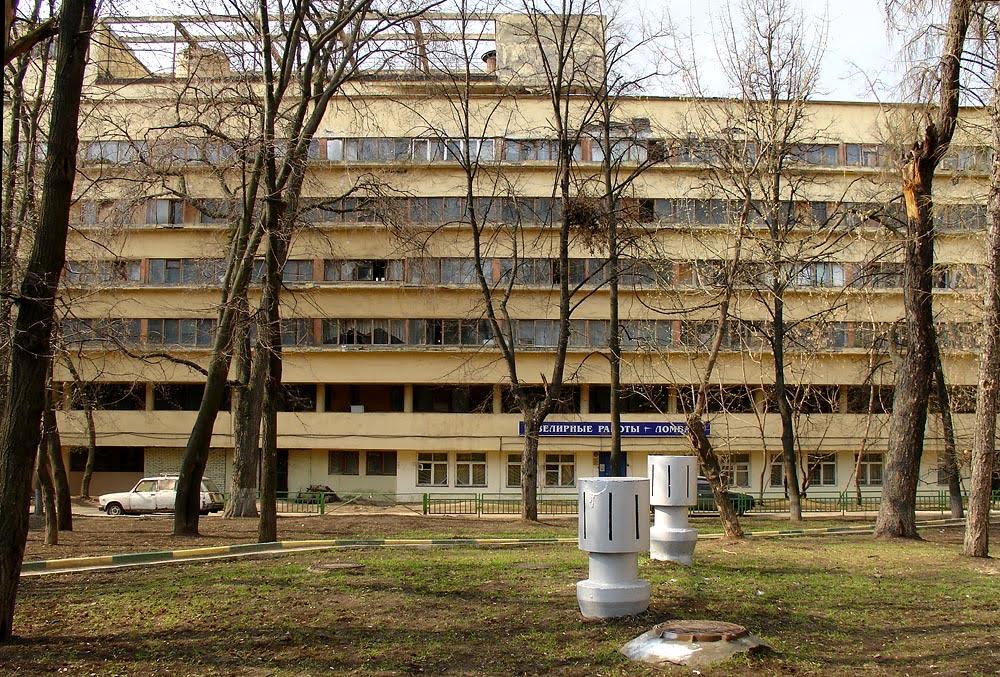
Contrast this with the Narkomfin building in Moscow, originally designed as the architectural manifestation of the Soviet ‘social condenser’. It now stands derelict and semi-ruinous at the centre of a commercial dispute over land.
This example presents us with a dichotomy that echoes globally. The safeguarding and abandonment of space at very least raises questions about what the intentions of these buildings were, whom they are for and what agency decides their preservation.
Can space designed with utopian ideals effectively traverse periods of different socio-political orthodoxy? Do these structures belong in contemporary society? VDNKh Urban Phenomenon provides food for thought on the cultural value placed on the inherited architecture from Soviet times.
Russian-born, US-based artist Anton Ginzburg explores these themes using iconic examples from the post Soviet landscape in his film Turo which will have its UK debut at Calvert 22 Foundation’s Power and Architecture season in London.
The film’s four chapters explore landmarks of Soviet constructivist architecture, presenting them as allegories for a contemporary reflection on their utopian intention. Turo gets its name from the word for ‘tower’ in the artificial international language of Esperanto. ‘Each part of the film is a metaphorical tower that gets deconstructed throughout the duration of the chapter,’ says Ginzburg about the work. ‘It still resonates deeply with contemporary culture, but today it exists as an archive of ruins, the record of fragmentation.’
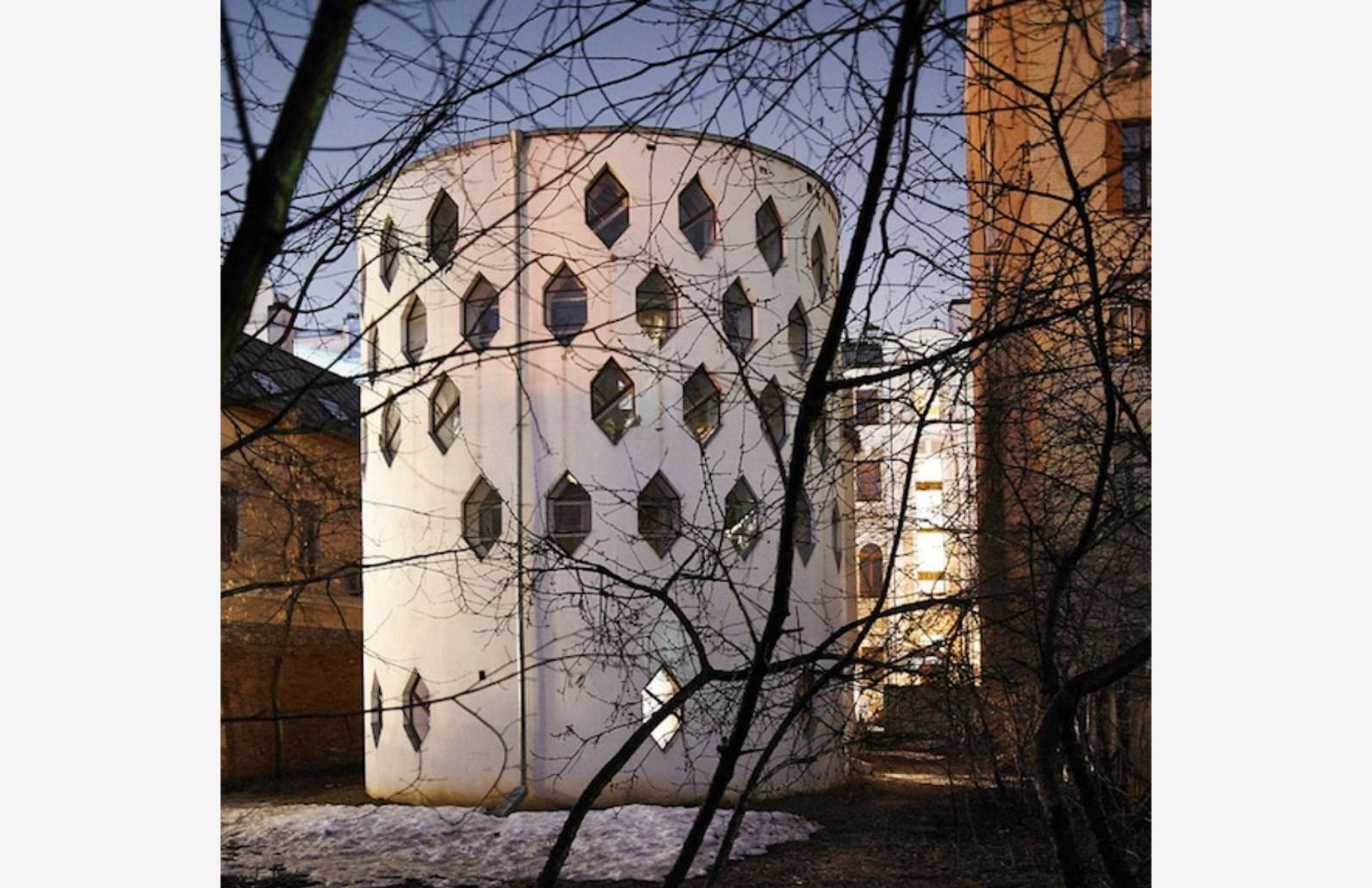
We are guided through Melnikov House, the Narkomfin Building, ZIL (an automobile factory designed by Vesnin brothers, now demolished) and the Monument to the Third International, designed by Vladimir Tatlin but never realised. Ginzburg places the iconic unbuilt structure in the ‘ghost mode’ of a video game, siting this tower in the Ukrainian town of Pripyat, famously decimated in the wake of the Chernobyl disaster. In Turo, Ginzburg is able to explore the cultural legacy of these real and imagined spaces, from the stage of their own dilapidation.
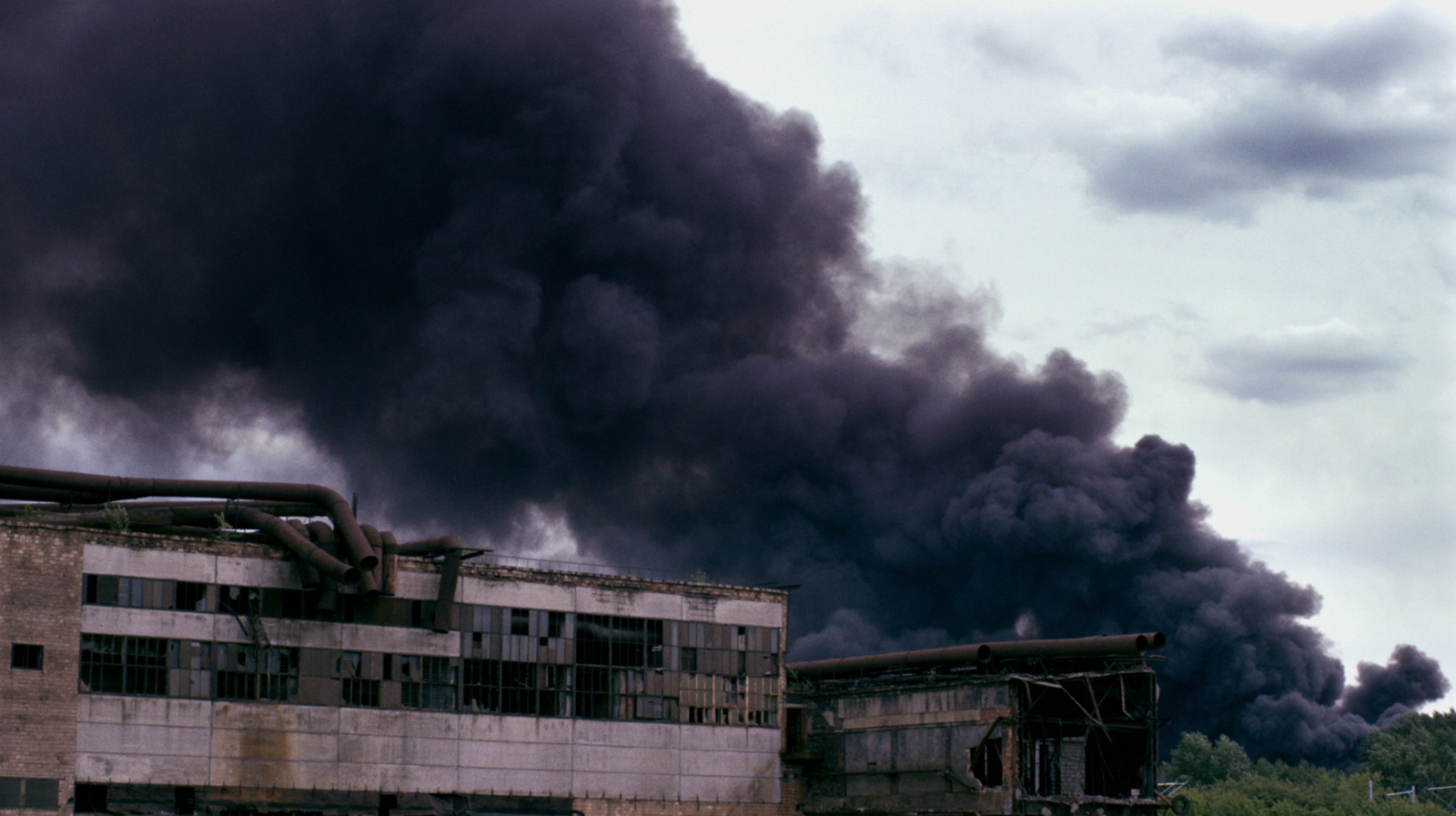
Each of the four towers stood once as lofty pillars of high modernity, signifiers of an optimistic wave of the Constructivist avant-garde. This is now the vantage point of their critique. Two of the three buildings from the film have at least survived the drastic changes in Moscow following the collapse of the union.
Today they stand away from centre stage, as monuments to the utopian ambitions of the movement. With numerous reports of planning activity from the city, it is clear that these towers share an awkward relationship with the future that they were designed for.
‘Dead Space and Ruins: Power and architecture Part II’ runs at the Calvert 22 Foundation until 7 August 2016. Part III opens 11 August 2016




